An Overview of FirstScope’s Optical Tube
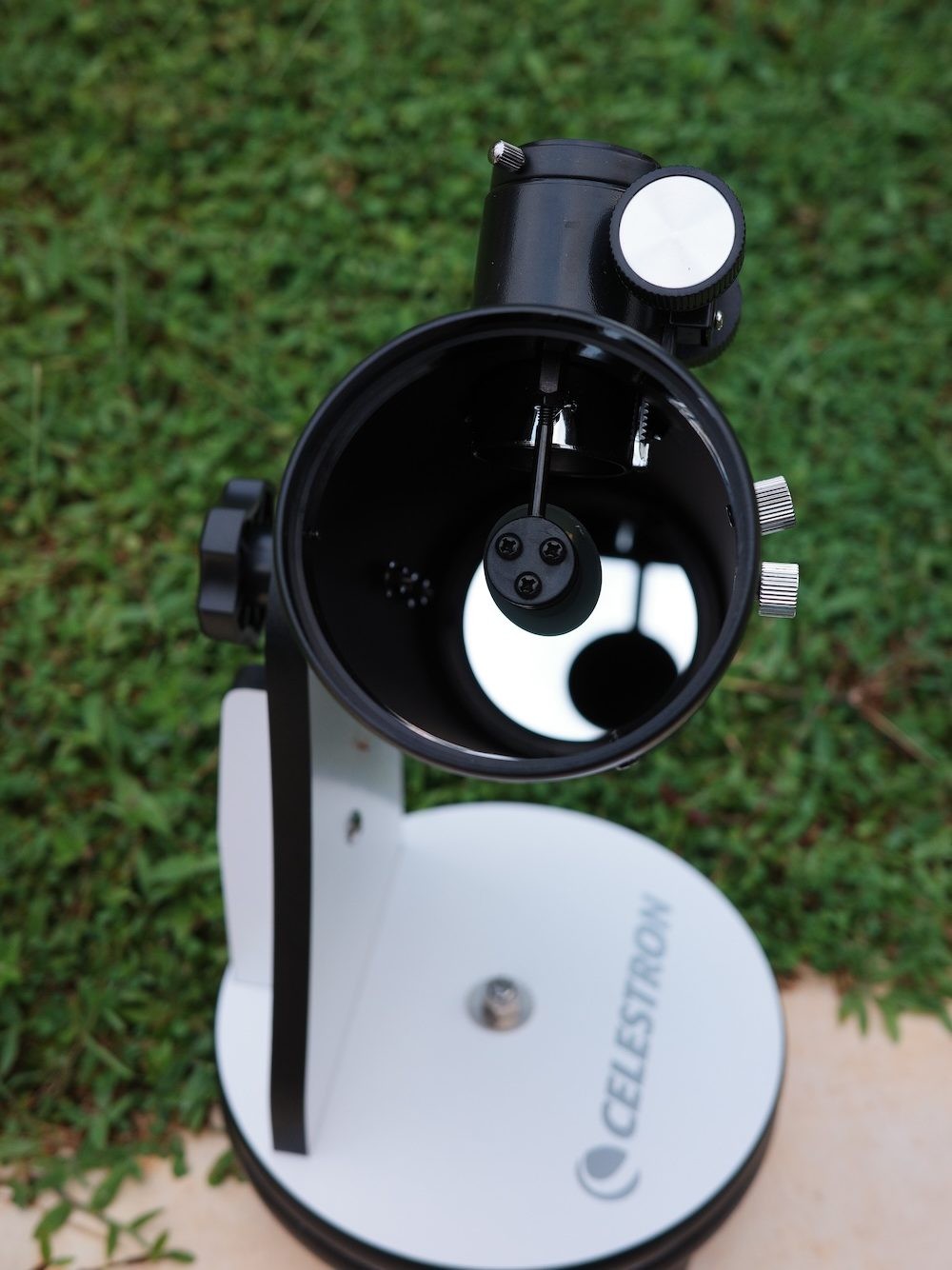
The Celestron FirstScope is a 76mm (3”) f/3.95 Newtonian reflector with a focal length of 300mm and a spherical primary mirror.
If you have done some basic research about telescopes, you probably know that a spherical mirror won’t focus light correctly like a parabolic one does. That is indeed the case with the Celestron FirstScope. It doesn’t deliver sharp images at anything over about 40x. Even at lower magnifications, stars look a bit bloated and the fine details on almost any object are smeared.
At a fast focal ratio such as f/3.95, precise collimation is critical with any Newtonian reflector. Unfortunately for Celestron FirstScope users, the primary mirror sits on a plastic plate that doesn’t allow for any kind of collimation. You have about a 50% chance that the scope will be collimated well enough to make an image that is at least passable.
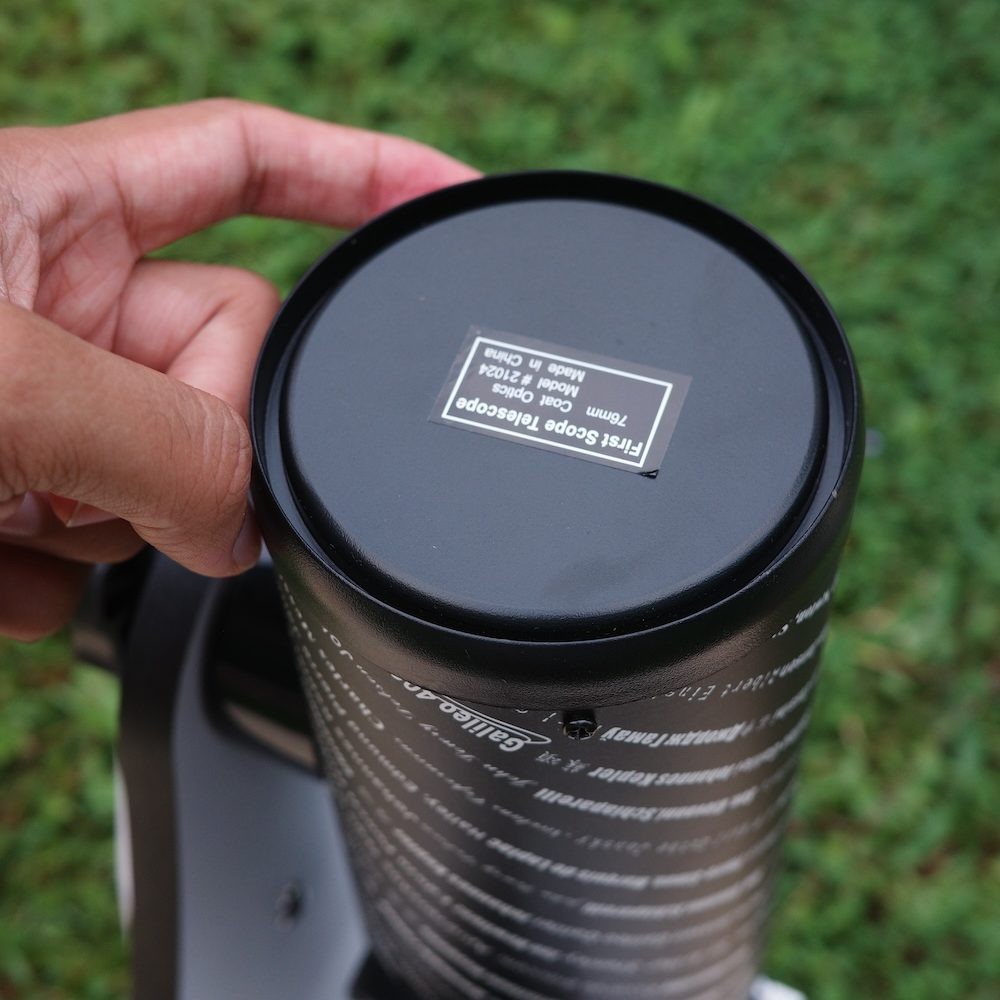
If your Celestron FirstScope is not collimated when you get it, you can either enlarge the mirror cell mounting holes to tilt the mirror slightly or pry the mirror out of its cell and try to shim it and put it back in. Alternatively, you can simply return the scope to Celestron or exchange it for a new unit.
The focuser on the FirstScope is actually more or less the same thing you see supplied on most cheap small Newtonians, even four times its price: a plastic 1.25” rack and pinion.
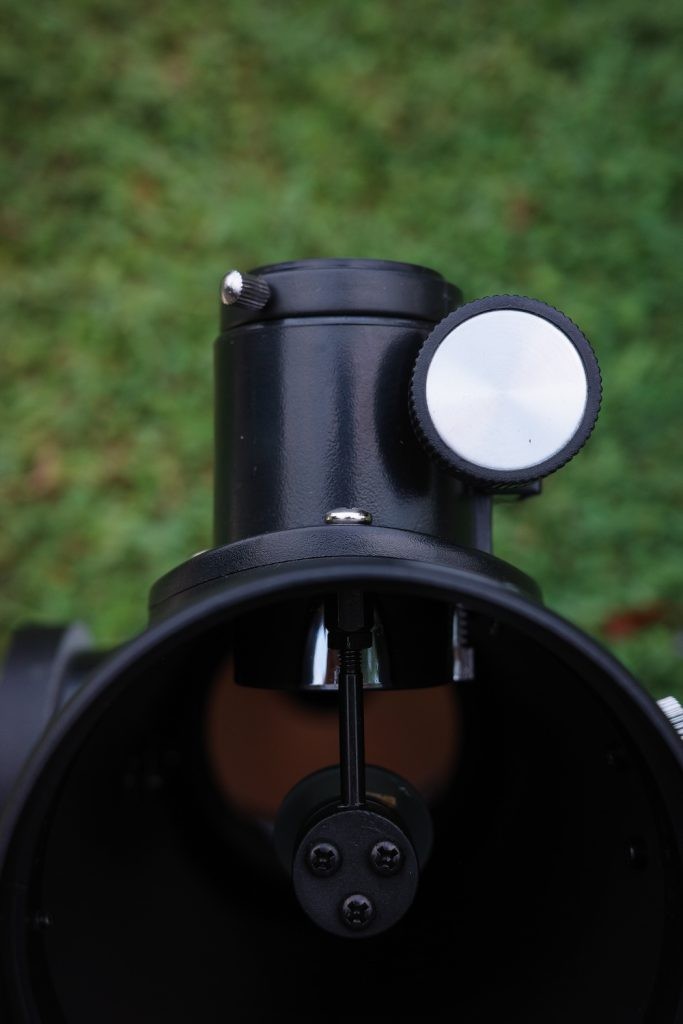
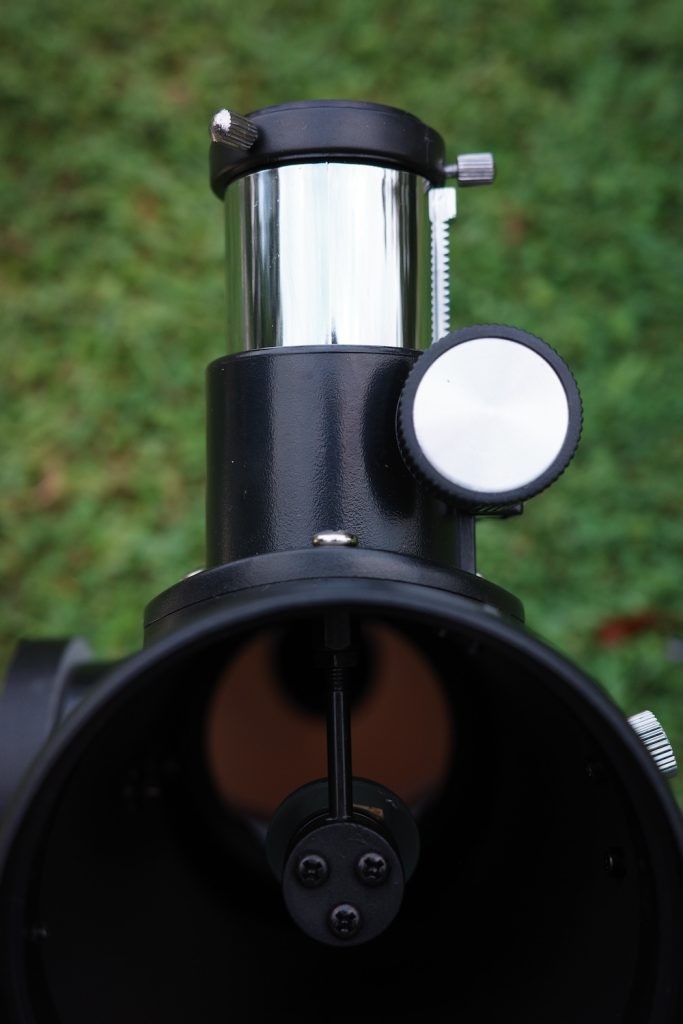
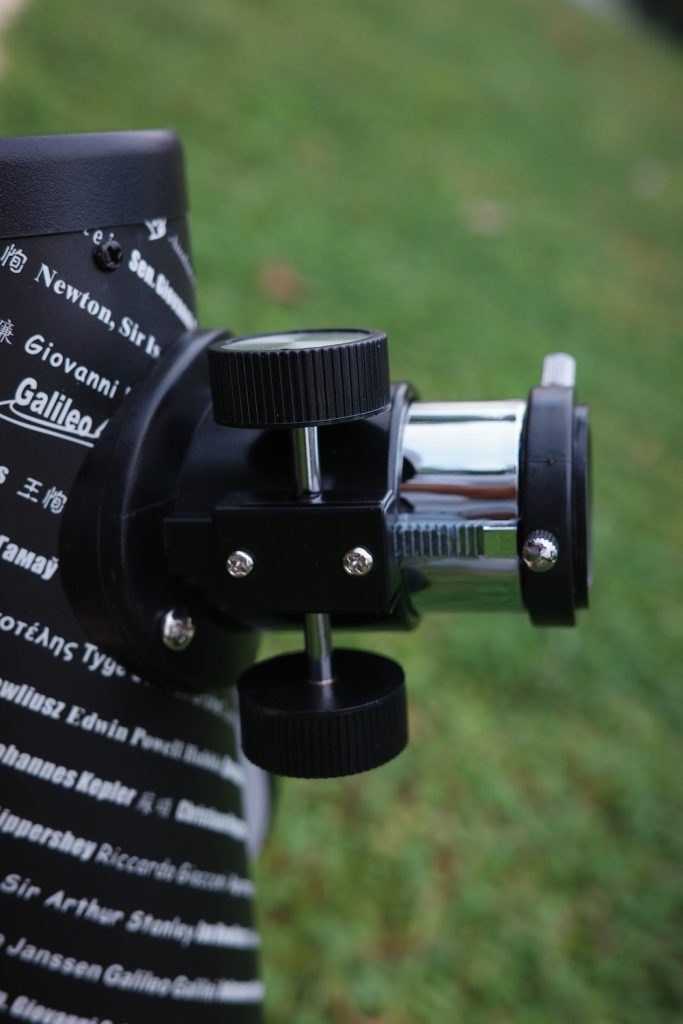
The Celestron FirstScope has no finder. You’re supposed to simply sight along the tube. With the low-power 20mm eyepiece that comes with the scope, which only magnifies 15x, this is easy enough to do. But it may take some practice for beginners.
The tube of the Celestron FirstScope is wrapped in vinyl with the names of famous astronomers, physicists, and opticians from throughout history. This is a nice touch, I confess.
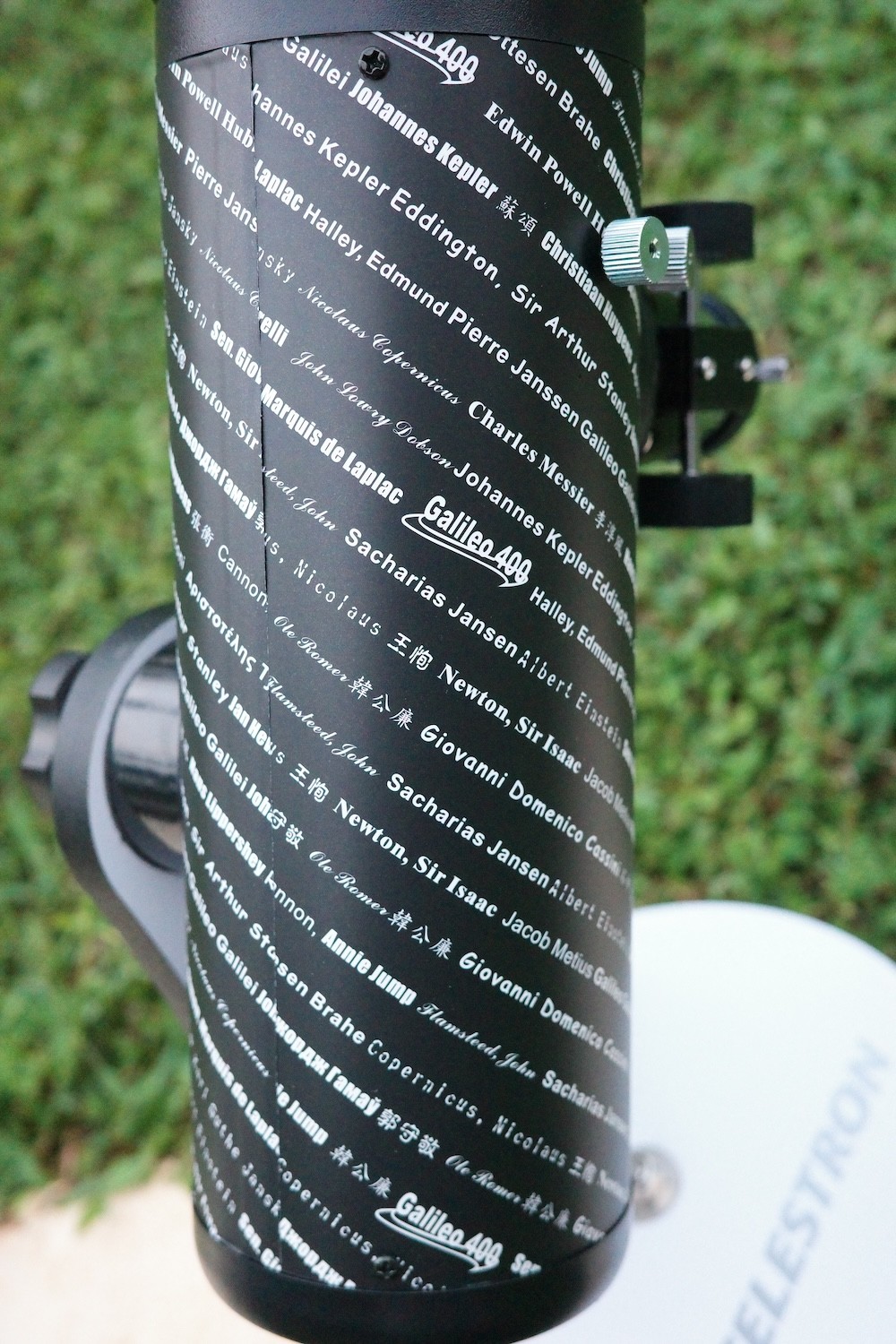
The Accessories with Celestron FirstScope 76
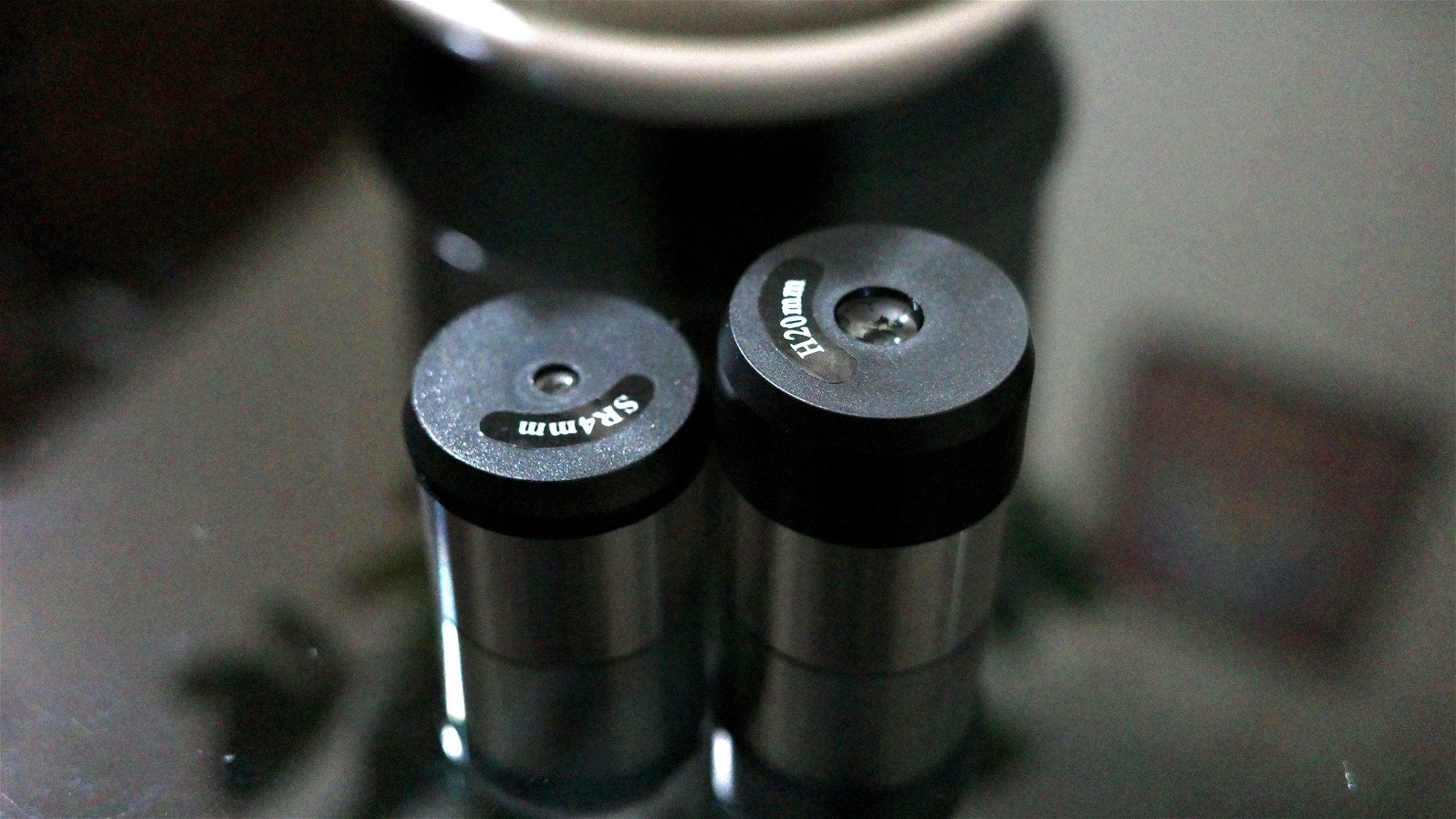
The 20mm Huygens… works. Barely.
The apparent field of view is extremely narrow (30 degrees), and the view is already fuzzier than it would be with a good eyepiece in the Celestron FirstScope. The Huygens design also adds some chromatic aberration (something one should never see in a Newtonian). A real Kellner or Plossl delivers much sharper views, but buying one would cost a significant proportion of the overall cost of the telescope.
The included 4mm Ramsden is useless, being the same hated eyepiece supplied with Celestron’s Powerseeker line.
It provides too much power for the scope (75x). The eye lens is tiny and has zero eye relief. It doesn’t perform well with a fast focal ratio telescope like the Celestron FirstScope and the field is slightly narrower than the 20mm Huygens.
It also has an annoying tendency to get stuck in the focuser, as I’ve experienced. The solution is to turn the scope upside down, loosen the screws, and shake it—preferably while above a garbage can, where it belongs.
Tabletop Dobsonian Mount
The FirstScope 76 Newtonian reflector telescope comes with a simple tabletop Dobsonian mount to which it is semi-permanently attached. Altitude tensioning can be adjusted with a hand knob, while azimuth can be adjusted by tightening or loosening the nut in the middle with a wrench or pliers.

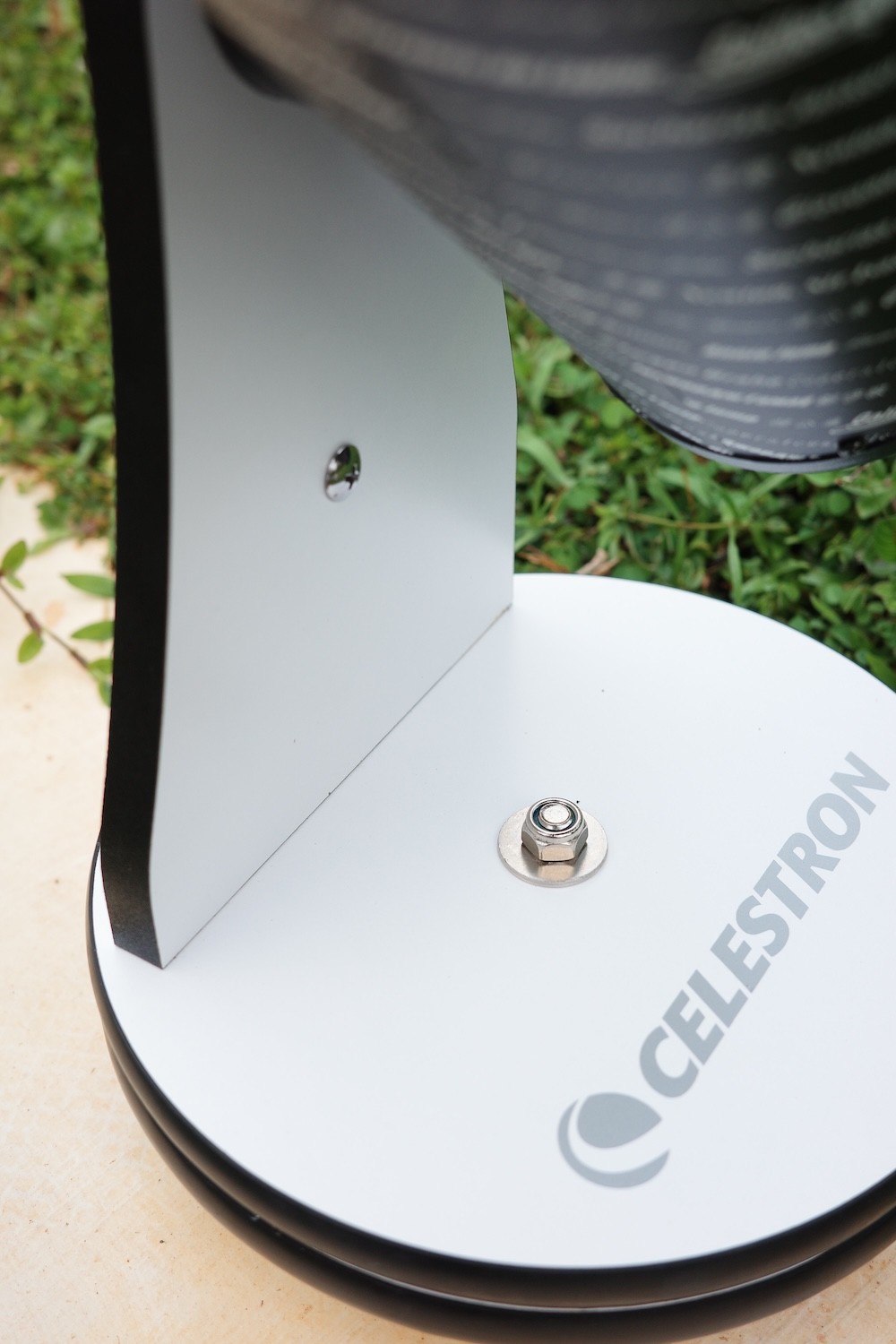
As to the smoothness of the mount’s motions, they’re pretty good. But I consider it more or less irrelevant for a scope that is probably not able to handle more than 40x.
Should I buy a Used Celestron FirstScope 76?
If you can get a FirstScope for less than the already-low new price, why not? The whole thing is so tiny that I can hold it with one hand and the height is hardly a concern either.
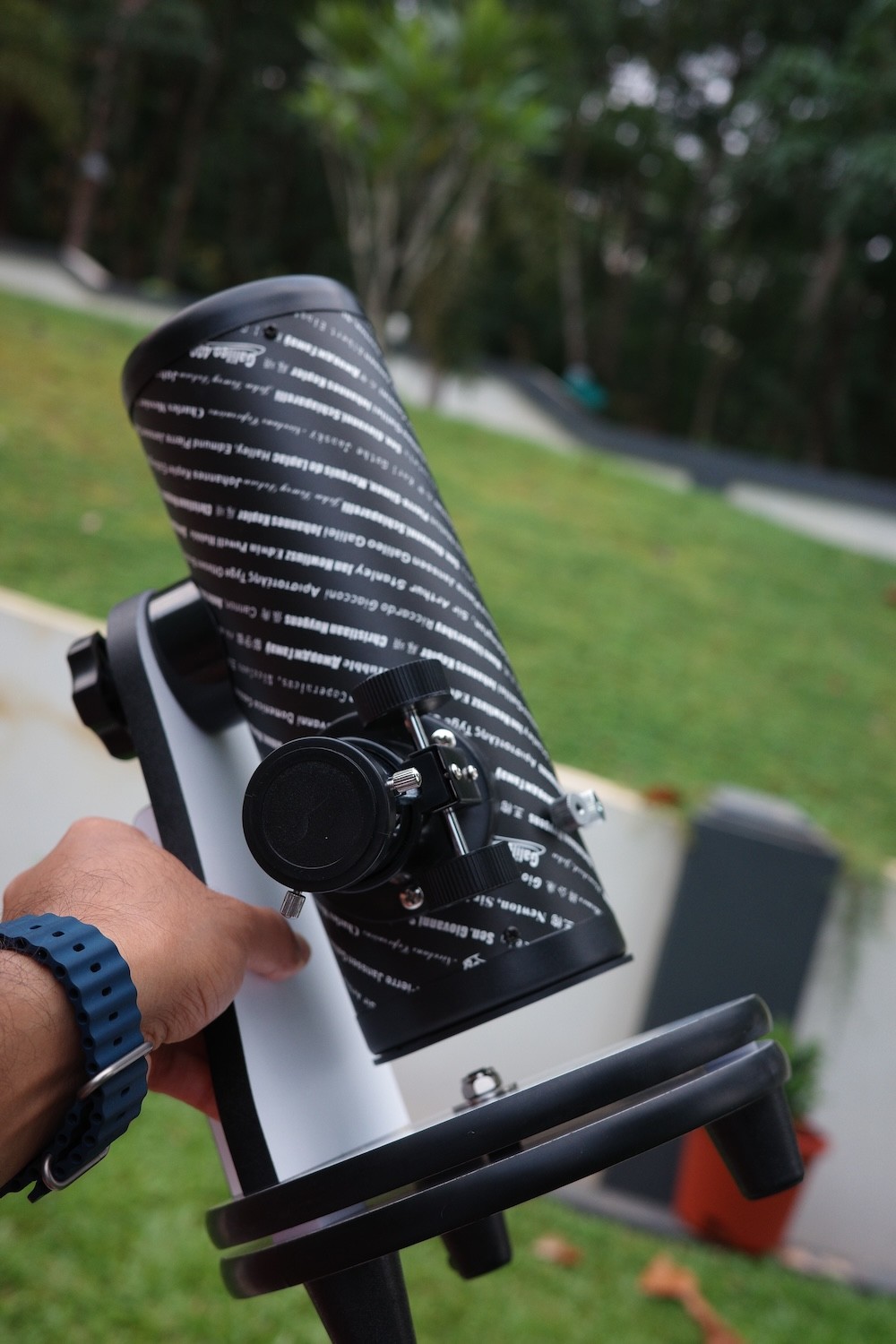
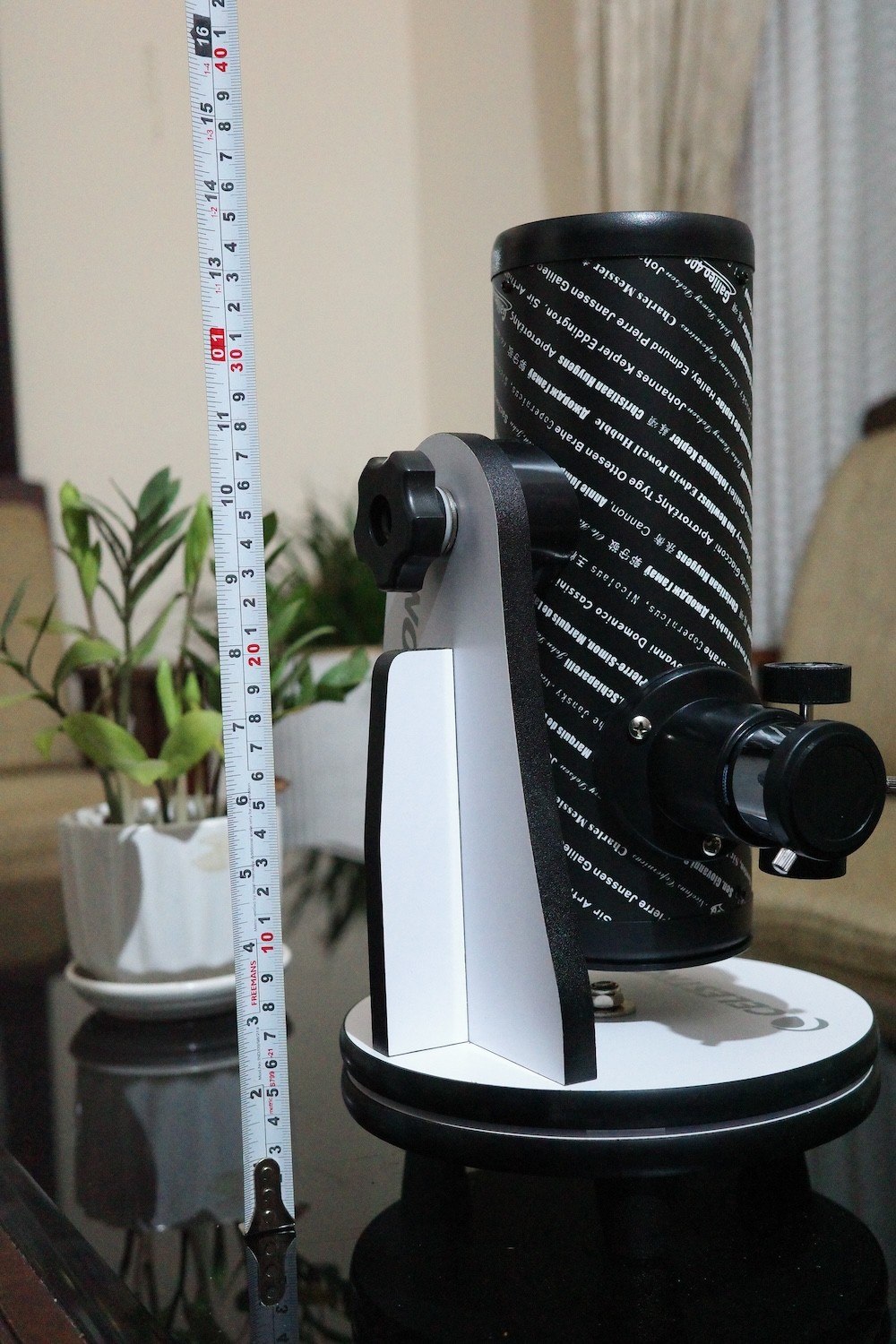
Accessory Kits and Other Variants
You can buy an “accessory kit” for the FirstScope. All the kit contains is some more garbage Huygenian eyepieces, a useless 5×24 finderscope, and a cheap Moon filter, which you plain don’t need and don’t work well anyway.
Celestron offers a “Cometron” variant of the FirstScope, which is exactly the same, except with passable Kellner eyepieces and the same godawful 5×24 finderscope attached. If that’s all you can afford, I would recommend it over the base FirstScope, but really, I would strongly caution you about both.
Alternative Recommendations
There are a few different options you could choose from instead of the FirstScope, including improved variants sporting additional features and vastly superior accessories:
Under $100
The only alternatives to the FirstScope in its price range are basically rebrands or upgrades with better eyepieces and/or finderscopes, such as the Orion FunScope or Celestron Cometron FirstScope.
- The Orion FunScope 76 suffers from the same spherical, non-collimatable optics as the FirstScope, but comes with a pair of actually usable Kellner eyepieces and a red dot finder.
- The Cometron edition of the FirstScope, as previously mentioned, comes with a 5×24 finder (slightly inferior to a red dot) and a pair of wide-angle eyepieces.
$100-$150
Spending more money is certainly a good idea; $150 gets you a 100mm tabletop Dobsonian with real parabolic optics and quality eyepieces.
- The Zhumell Z100 and Orion SkyScanner 100 have a similar tabletop Dobsonian design and super-wide field of view to the FirstScope/FunScope but with more aperture, parabolic primary mirror optics, and decent included eyepieces, along with a red dot finder for aiming.
- The SarBlue Mak60 tabletop Dobsonian technically has less aperture than the FirstScope but in practice delivers similar brightness on deep-sky objects – and will blow away the FirstScope on views of the Moon and planets with its razor-sharp Maksutov-Cassegrain optics.
- The Orion SpaceProbe II 76EQ has much sharper images and better accessories than the FirstScope, though it is mounted atop a spindly equatorial mount and has a rather long focal length and resultingly narrow field of view.
Above $150, there are more options for larger tabletop and full-sized Dobsonians such as those offered by Zhumell, Sky-Watcher, and Orion. Check out our rankings and top picks pages for more information.
Aftermarket Accessory Recommendations
Instead of buying more accessories for the Celestron FirstScope 76mm Newtonian reflector telescope, you should save up for a better telescope, which will come with better accessories anyway.
What can you see with the Celestron FirstScope?
Surprisingly, my ability to aim the Celestron FirstScope 76 is more important than its optics when it comes to how well it works. Anything besides the Moon, planets, or any other naked-eye visible target is a bit of a challenge to find.
Testing Solar System Targets
Within the solar system, I’d advise you not to get your expectations too high.
Mercury, through the FirstScope, is a mushy blob. Venus shows its phases, and the Moon looks pretty good (especially if you’ve never looked through a telescope before).
Mars is a featureless red blob even when it’s in opposition—not even the ice cap is visible.
Jupiter’s moons are visible, and the cloud bands can just barely be spotted. Saturn’s rings and a couple moons can also be seen.
Good luck finding Uranus or Neptune, let alone distinguishing them from stars.
Testing Deep-Sky Targets
Galaxies are, of course, quite underwhelming in the Celestron FirstScope.
Under less-than-dark skies, only Andromeda and M33 are big enough to easily identify and show little in the way of detail. If you can escape city light pollution, you’ll be rewarded with a dust lane in Andromeda and faint hints of M33’s spiral arms.
With luck, you may be able to spot M81, M82, M51, and some of the brighter members of the Virgo Cluster or the Leo Triplet, but they’re quite tiny at 15x and won’t show any detail.
Globular clusters can be seen with the Celestron FirstScope, and they can be clearly distinguished from stars even at just 15x with the 20mm Huygens. However, no 3″ telescope, and especially not one with the poor optics of the FirstScope, can resolve stars in them.
Forget observing planetary nebulae—they’re too small to identify at 20x and trying to increase the power will, of course, only lead to blurry views.
Bright, big nebulae like Orion and the Lagoon can be seen through the FirstScope, but for the best views, the sky needs to be dark.
Open star clusters, which are hard to find without a finder, are probably the most beautiful things to see through the Celestron FirstScope because they are bright, don’t have much fine detail, and are usually pretty big. The Double Cluster and the Pleiades, in particular, look excellent and are relatively easy to get the FirstScope pointed at.

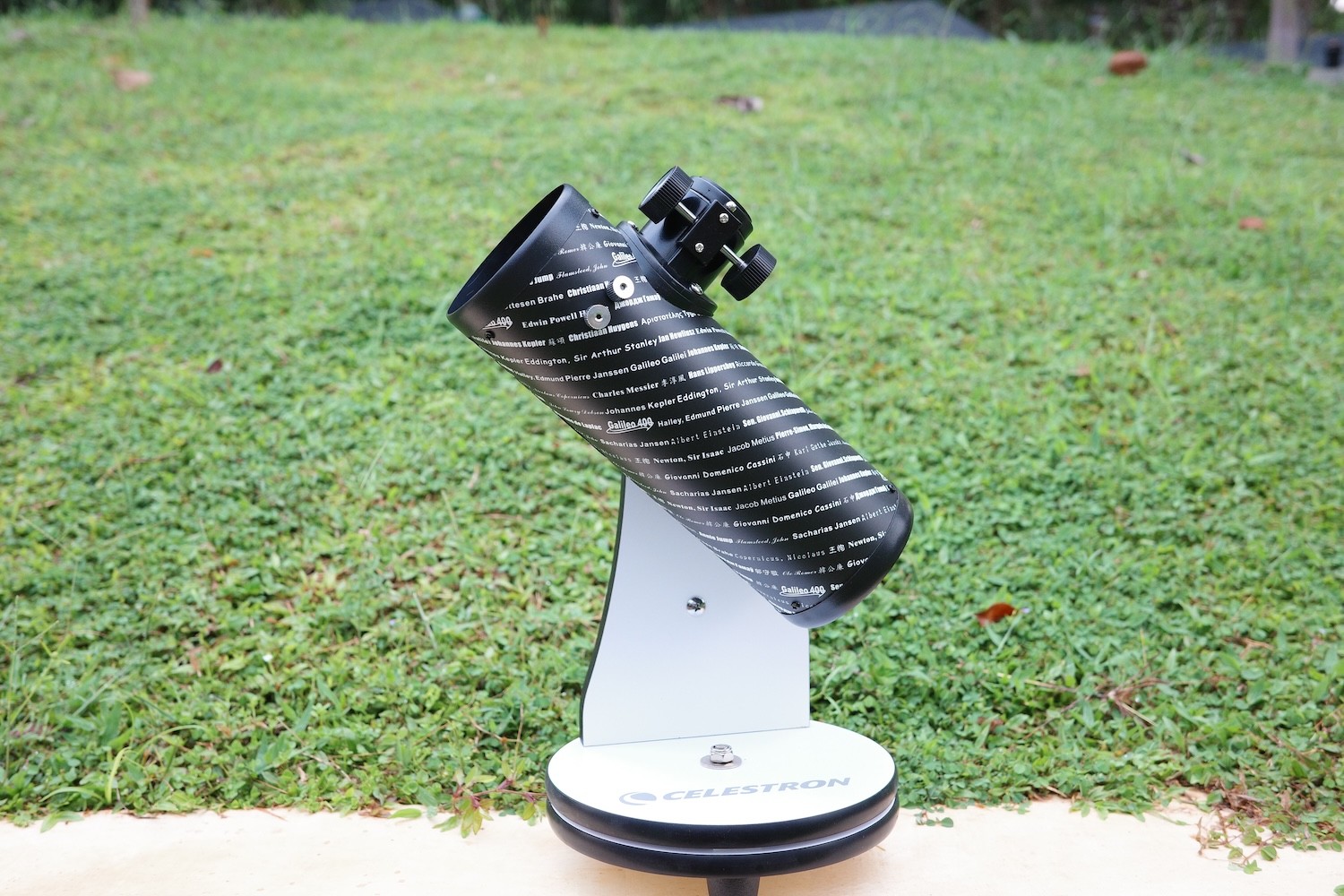
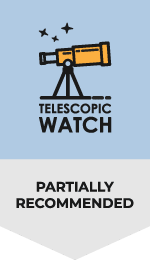

Very good analysis and helpful review.
Is it better with kit than 15×70 celestron binoculars..? Can it show deep sky objects??
Stick with the binoculars, they’ll show more.
I got one of these telescopes, and even Mars is completely unresolvable, and features on the moon are consistently blurred. I agree with your recommendation to get something better.
Sounds about right.
Thank you for the time you took to make this good review.
I will definitely visit your site more often.
Alberto from Owen Sound, ON, Canada.